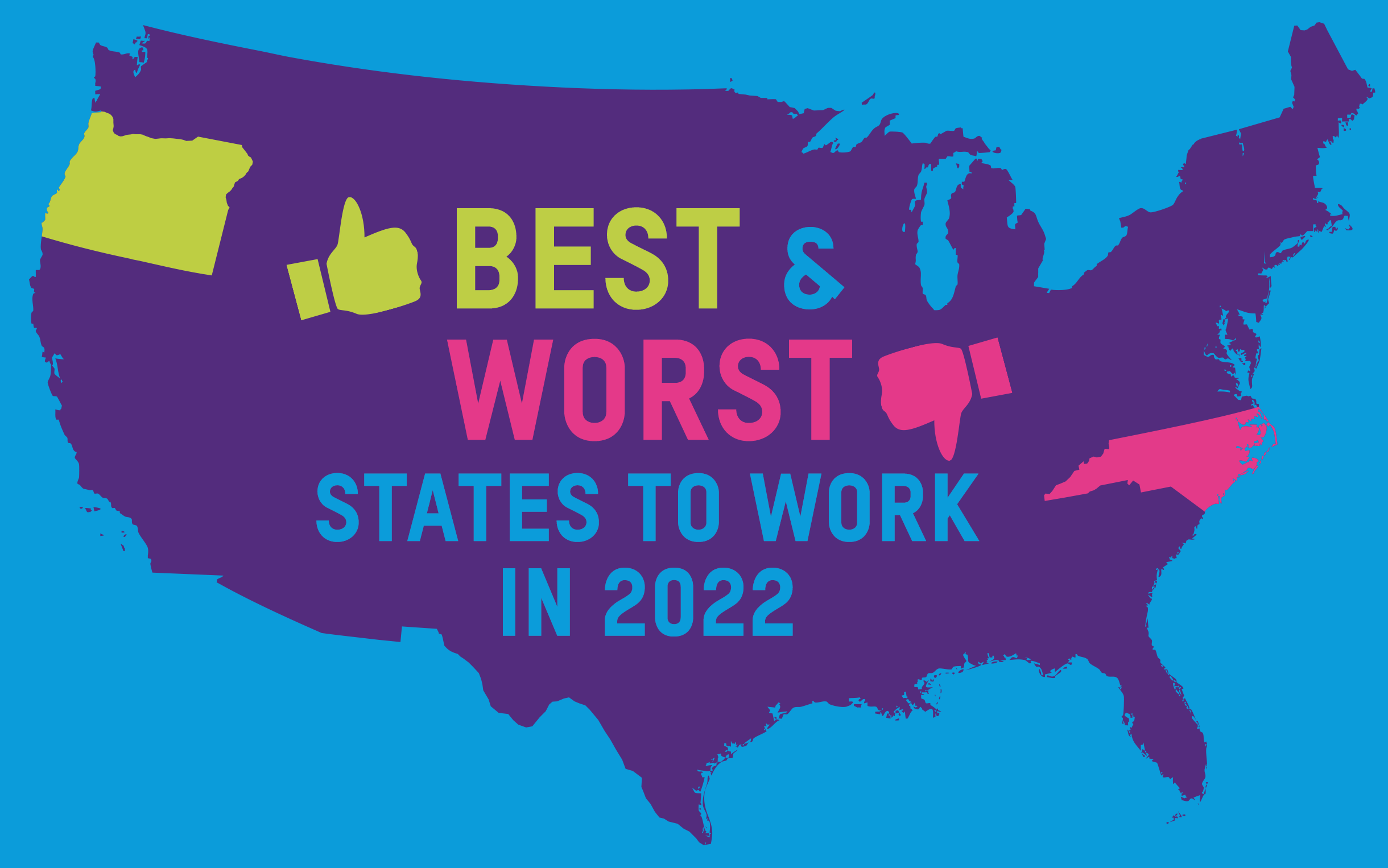Oxfam has published this year’s Best States to Work Index, which ranks states on their labor policies. The upshot: where you live matters too much.
“This is a perilous time for millions of working families in the US, who are struggling every day just to make ends meet. As some states have stepped up to protect and support working families, others have refused to act, leaving workers with poverty wages, dangerous conditions, and no rights to organize or act collectively. This is about the reality of life in our country, and the urgent need for federal action.” -Dr. Kaitlyn Henderson, senior researcher and author of Oxfam’s Best States to Work Index
Workers shouldn’t have to struggle to feed themselves and their families. They shouldn’t need to choose between taking care of a sick family member and keeping their jobs. And they shouldn’t have to sacrifice their fundamental rights to make ends meet. Congress can act. And so can states—to improve the lives, well-being, and livelihoods of workers and working families.
Oxfam’s 2022 Best States to Work Index offers a blueprint of policies for both states and the federal government to improve wages, worker protections, and rights to organize.
When we pay workers enough to support their families, when we offer them essential protections like access to paid family and medical leave, and when we ensure they can exercise their rights to organize and collectively bargain, we don’t merely improve conditions for workers. We pull families out of poverty, we combat gender and racial discrimination, we fight hunger, and we strengthen the economy. States and federal policymakers can make that happen right now.
Raise the Wage
Congress should pass the Raise the Wage Act, which would raise the federal minimum wage to $15 by 2025—an absolute minimum as we watch real wages decline amid inflation levels higher than we’ve seen in a generation. Further, it would implement automatic, indexed wage increases in 2025, ensuring that wages keep up with the rising cost of living.
And it would gradually eliminate subminimum wages (stuck at $2.13 since 1991) for the millions of tipped wage workers, disabled workers, and youth. Allowing a subminimum tipped wage is a policy choice—one that traps many women, especially single moms, in poverty. According to the National Women’s Law Center, poverty rates are nearly 30 percent higher in states that maintain a subminimum tipped wage.
In addition, Congress can ease the burden on working families by raising wages for care workers, including those who care for children, the elderly, and people with disabilities. With child care costs roughly equivalent to a year’s earnings for someone making minimum wage, it’s urgent that Congress pass the American Jobs Plan’s care provisions, the Child Care for Working Families Act, and the Universal Child Care and Early Learning Act.
But states don’t need to wait for Congress. They have the power to raise the minimum wage for workers in their states. Even better, states can follow the lead of Alaska, Arizona, Colorado, Maine, Minnesota, Montana, Ohio, South Dakota, and Washington—all of which passed legislation to automatically raise wages each year to keep up with inflation. Washington goes even further, allowing localities to set higher wages than the state standard.
Strengthen Worker Protections
Women, especially women of color, suffer disproportionately when there are no policies in place to guarantee paid sick and family leave. Congress should provide paid sick and family leave for all workers. The FAMILY Act, the Building an Economy for Families Act, and the Healthy Families Act would establish federal paid-leave standards, helping workers care for themselves and their families without having to sacrifice their livelihoods.
States can also step up to provide paid sick and family leave for their workers. Just look to Oregon, whose paid-leave policies protect private-sector, public-sector, and part-time workers, and include paid leave for survivors of sexual assault, domestic violence, harassment, and stalking.
Congress can also help close the gender wage gap by strengthening equal-pay laws. The Paycheck Fairness Act would do just that, including by limiting employers’ reliance on an applicant’s salary history, protecting workers who discuss their wages, and requiring employers to prove that pay disparities are not solely based on gender.
New York and New Jersey, for example, have shown that states can strengthen equal-pay laws, too, by mandating equal pay for a wide range of protected classes to prohibit discrimination based on gender identity and expression, sexual orientation, age, disability, and domestic violence survivor status. States should—at a minimum—mandate equal pay across the private and public sectors and restrict pay-secrecy and salary-history requirements.
Speaking of fighting gender discrimination, Congress must pass the Pregnant Workers Fairness Act, which requires reasonable accommodations and prohibits discrimination for qualified employees affected by pregnancy, childbirth, or related medical conditions. Thirty states and five localities have already implemented protections for pregnant workers. And Congress should pass the PUMP for Nursing Mothers Act to expand breastfeeding protections in the workplace.
Both Congress and the states can protect domestic workers, too. Congress should pass the Domestic Workers Bill of Rights. Ten states and two major cities have already passed their own domestic worker bills of rights. Other states and localities can follow suit.
While they’re at it, Congress should give working families the stability, predictability, and hours they need by passing the Schedules That Work Act and the Part-Time Worker Bill of Rights.
And as temperatures and heat-related work deaths climb to alarming levels, we urgently need federal heat-protection standards for both indoor and outdoor workers. In the meantime, states can issue their own heat-protection standards, as Oregon, Washington, California, Colorado, and Minnesota have done.
Protect Rights to Organize
Workers need the power to advocate for themselves and to build power collectively. Congress should pass the PRO Act to expand protections around workers’ rights to bargain and organize. And states need to eliminate “right-to-work” laws, as Missouri did in 2018; follow the lead of Colorado and Nevada in protecting the rights of state and local employees to bargain collectively; and extend organizing rights to workers excluded by federal protections, including agricultural workers (as California has done), contractors, and domestic and gig workers.
Laws that protect the rights of workers can reduce gender and racial inequality, make families and communities healthier and stronger, and contribute to the well-being of all. But not every state is up to the task, and our poorest and most vulnerable communities are bearing the brunt of the policy failures.
Now is the time to call on our legislators—from state capitals to DC—to make fairness in the workplace the law of the land.
Explore the interactive map of best and worst states to work




